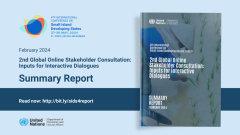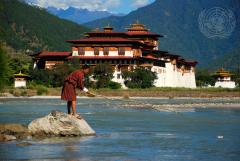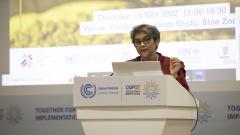Building Sustainable Energy Access in the Most Vulnerable Countries
488 million people living in Least Developed Countries do not have access to electricity. That’s more than half of the entire global population without electricity.
But what are the main roadblocks towards universal energy access – and can we overcome them while ensuring net-zero emissions?
In New York this September, OHRLLS will be taking part in the High-level Dialogue on Energy to help answer these important questions.
In advance of that meeting, OHRLLS has launched, alongside UNDP and the World Bank, a report on energy access that explored five foundational subjects: 1) energy access; 2) energy transition; 3) enabling the Sustainable Development Goals through inclusive, just energy transitions; 4) innovation, technology and data, and 5) finance and investment.
These forums brought together some of the world’s brightest minds on these subjects from a wide variety of social and geographic backgrounds. They aim to identify key recommendations for a global roadmap towards the achievement of SDG7 - Ensure access to affordable, reliable, sustainable and modern energy for all - by 2030 and net zero emissions by 2050.
The objective of achieving net-zero emissions by 2050 is crucial if we are to meet the central objective of the Paris Agreement. That agreement aims to hold the global average temperature increase to “well below 2°C above preindustrial levels and pursuing efforts to limit the temperature increase to 1.5°C above pre-industrial level”.
The world’s most vulnerable countries however, especially the 46 least developed countries, are experiencing significant challenges towards the goal on universal access to sustainable energy.
These 91 countries – the least developed, the landlocked developing and the small island states – rarely benefit from large scale investments as in more prosperous developing countries. And currently, she noted, investments are significantly below what is required to achieve universal access to energy in the LDCs.
The good news is, despite the many constraints LDCs face, there is huge growth potential in their energy sector to develop sustainable, secure and zero-emission energy systems, owing to their endowments of natural resources such as solar, hydro, geothermal and wind to accelerate energy access.
Urgent action is required to develop enabling environments for energy access and at the same time support these countries to deliver on their climate finance pledges.
Recognizing large financing gap in the LDCs, the report calls for 50 per cent of all financing for clean cooking and electricity access to be directed to the Least Developed Countries (LDCs)
Lastly, the LDC5 Conference taking place next year provides an opportunity to strengthen efforts to support the LDCs towards the goal of universal access by 2030.






